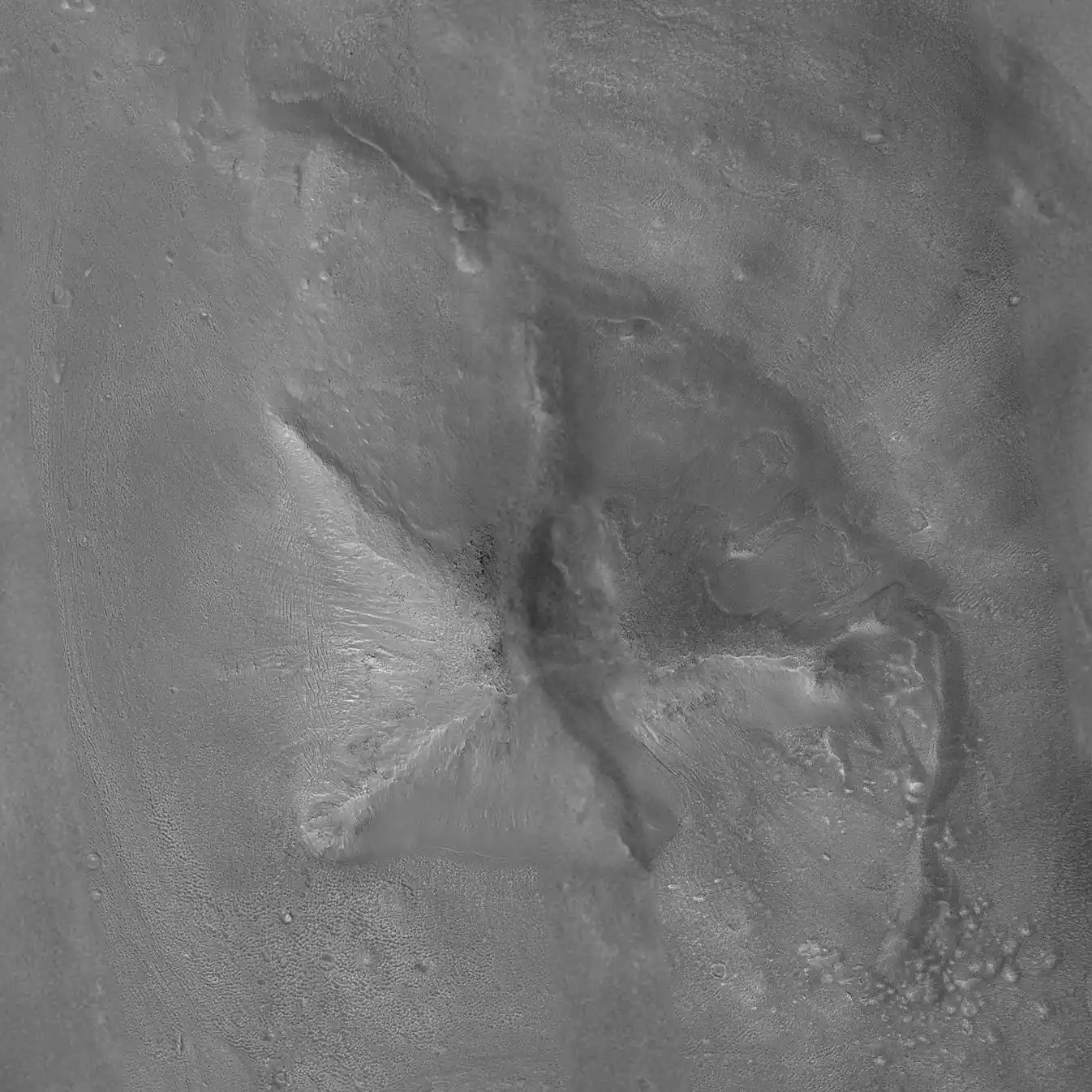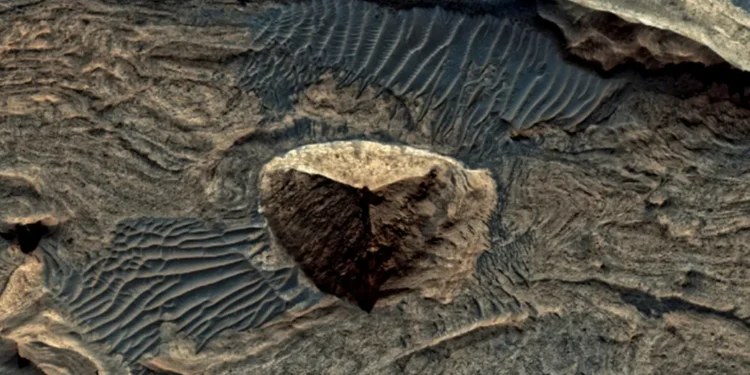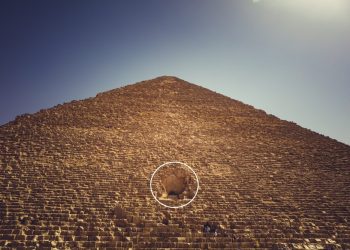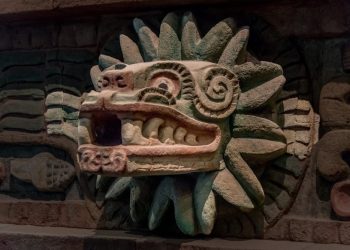Did somone find a Martian pyramid? A strange photograph captured on Mars has reignited speculation about alien structures on the Red Planet. This time, it’s a three-sided pyramid-like formation spotted in the Candor Chasma region—an area already known for its dramatic canyons and ancient geological activity. To some, the shape is evidence of extraterrestrial architecture. To others, it’s just another case of our brains seeing patterns where none exist.
Pareidolia or Something More?
The Martian pyramid theory got a boost from UFO enthusiasts who claim to have found the formation in a high-resolution Gigapan image taken by NASA’s Mars Reconnaissance Orbiter. And the claims to support their theories? Well, the say that the pyramid has one smooth side, suggesting that it may still retain part of its original surface coating. The other sides, they argues, appear eroded—evidence, in their view, of extreme age.
But this isnt the first time where people interpret unusual formations on Mars as potential alien artifacts. you see, our tendency to perceive faces, structures, or familiar shapes in random patterns is a psychological effect known as pareidolia. It’s the same phenomenon that makes us see animals in clouds or human features on rock faces.
The Science Behind the Shape
Ok so, where is this alleged Martian pyramid? The structure in question sits in Candor Chasma, part of the Valles Marineris canyon system—one of the largest in the solar system. The image, taken by the HiRISE camera aboard NASA’s MRO spacecraft, shows a triangular mound casting sharp shadows. While visually striking, planetary geologists suggest it’s most likely a product of natural erosion, not intelligent design.

Despite this, some continue to advocate for the artificial-origin theory. In a study published in Trade Science, researchers associated with the Cydonia Institute argue that the structure demonstrates geometric precision beyond what nature would typically produce. “We contend that the structural form of this three-sided pyramid observed within the western region of Candor Chasma is real,” the authors wrote, claiming a “high probability of artificial origins.”
That argument hasn’t convinced the broader scientific community. Experts point out that Mars has undergone billions of years of geological processes—including wind erosion, landslides, and tectonic shifts—that can create features which appear artificial from certain angles or under specific lighting conditions.
When Shapes Deceive Us
Carl Sagan was one of the first to urge caution when interpreting strange formations on Mars. In his 1980 book Cosmos, he talked about pyramid-like hills on the planet—some with bases stretching three kilometers wide. “With the ancient eroded shape,” he wrote, “they could be small hills, sandblasted for centuries, but they warrant, I think, a closer look.”
That advice still makes sense today. Mars is full of odd shapes and sharp shadows that can mess with our perception. And while our imaging tech has come a long way, so has our tendency to see what we want to see.
Chances are, this three-sided Martian pyramid is just another weathered hill. But like the famous “Face on Mars,” it taps into something deeper. And I beleive it is a human impulse to find meaning in the unknown, especially when staring out at an alien world we’re still only beginning to explore. But dont get me wrong, I am not saying that there is nothing on Mars we should be looking out for. Of course not. We should. But we should do it while making sure we use our intellect, scientific reasoning and curiosity while at it. This is why I am very excitied about future missions to Mars.











